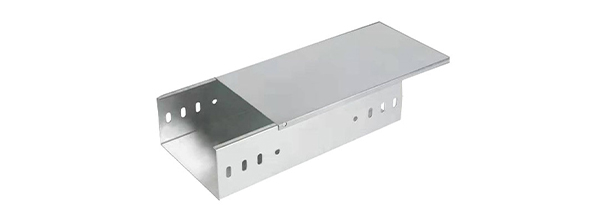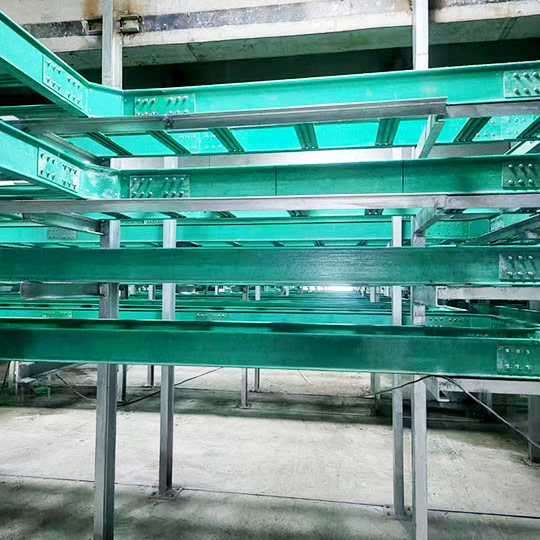Table of Contents
Introduction
Trough Type FRP cable trays are one of the most versatile and widely used cable management solutions in industrial, commercial, and infrastructure projects. Their U-shaped design offers protection to cables while maintaining ease of access for maintenance and modifications. Made from fiberglass reinforced plastic (FRP), these trays combine durability, corrosion resistance, and lightweight properties, making them ideal for environments where metal trays would deteriorate quickly.
This guide covers the technical specifications, advantages, installation, maintenance, applications, and frequently asked questions regarding trough type FRP cable trays. It also includes detailed tables and references to authoritative standards to ensure a complete understanding.

Advantages of Trough Type FRP Cable Trays
| Advantage | Description |
|---|---|
| Protection | U-shaped design shields cables from dust, moisture, and mechanical damage. |
| Corrosion Resistance | FRP material withstands water, chemicals, UV exposure, and humidity. |
| Lightweight | Easier handling, transport, and installation compared to steel trays. |
| High Load Capacity | Supports heavy cables over long spans with proper bracket support. |
| Flexible Design | Accommodates horizontal, vertical, and multi-level cable layouts. |
| Fire Retardant | FRP can be manufactured with fire-retardant resins to meet safety codes. |
| Low Maintenance | Minimal upkeep required, reducing lifecycle costs. |
Technical Specifications
Trough type FRP cable trays are available in multiple sizes and grades to meet different installation needs.
| Parameter | Typical Range | Unit |
|---|---|---|
| Tray Width | 100–600 | mm |
| Tray Depth | 50–150 | mm |
| Maximum Load | 400–1200 | kg/m |
| Material | Fiberglass Reinforced Plastic (FRP) | – |
| Operating Temperature | -40 to 120 | °C |
| UV Resistance | Yes | – |
| Fire Resistance | Optional FRP grade | – |
| Standard Compliance | IEC 61537 / ASTM D638 | – |

Applications
Trough-type FRP cable trays are widely used across industries:
| Application | Description |
|---|---|
| Industrial Facilities | Protect control and power cables in factories and plants. |
| Offshore and Coastal Installations | FRP resists saltwater and UV degradation. |
| Chemical Plants | Resistant to acids, alkalis, and other corrosive substances. |
| Commercial Buildings | Cable management for office, data center, or hospital infrastructure. |
| Outdoor Installations | Suitable for sun-exposed areas, outdoor substations, and railways. |
| Power Generation | Ideal for heavy electrical cables in power plants. |
Installation Guidelines
Proper installation ensures durability and cable safety. Follow these steps for trough type FRP cable trays:
- Load Assessment: Calculate the total cable weight, including potential future expansion. Choose tray width, depth, and FRP grade accordingly.
- Support Brackets and Spacing: Install brackets according to tray span charts provided by the manufacturer. Use corrosion-resistant fasteners compatible with FRP.
- Smooth Routing: Avoid sharp bends; use prefabricated elbows or junctions. Maintain a gentle slope for cable drainage and ventilation.
- Joint Connection: Align tray sections and secure with recommended bolts or clamps. Ensure a flush connection to prevent cable snagging.
- Environmental Considerations: Consider UV exposure, wind load, temperature changes, and chemical presence. Protective coatings may be applied in highly corrosive environments.
- Grounding & Bonding: FRP is non-conductive; ensure electrical grounding and bonding follow local codes.
- Inspection & Adjustment: Periodically inspect for loose fasteners, sagging, or damaged trays. Adjust supports or replace trays as needed.
Maintenance Guidelines
Maintaining trough type FRP cable trays ensures long-term reliability:
- Regular Cleaning: Remove dust, chemical residues, and debris.
- Visual Inspection: Check for cracks, warping, or loose connections.
- Cable Organization: Ensure cables remain tied and routed properly.
- Environmental Monitoring: Assess exposure to extreme temperatures, UV, or chemicals.
- Record Keeping: Maintain logs of inspections and maintenance.
- Damage Response: Replace or repair trays showing structural compromise.
| Task | Frequency |
|---|---|
| Visual Inspection | Quarterly |
| Cleaning | Semi-Annually |
| Load Check | Annually |
| Structural Integrity Check | Every 2 years |
Common Challenges and Solutions
Challenge 1: Cable overcrowding
Solution: Ensure proper tray sizing and separation for airflow.
Challenge 2: Outdoor UV degradation
Solution: Use UV-stabilized FRP grades.
Challenge 3: Chemical exposure
Solution: Choose FRP grades with higher chemical resistance or protective coatings.
Challenge 4: Long spans under heavy load
Solution: Increase support spacing or select thicker tray sections.
Comparison with Other Tray Types
| Feature | Trough FRP | Trapezoidal FRP | Tray FRP | Steel Tray |
|---|---|---|---|---|
| Load Capacity | Medium | High | Medium | High |
| Corrosion Resistance | Excellent | Excellent | Excellent | Low |
| Weight | Light | Light | Light | Heavy |
| Cable Protection | High | Medium | Medium | Low |
| Installation Ease | Moderate | Moderate | Moderate | Low |
| Cost | Moderate | Moderate | Moderate | High |
FAQ
Can trough FRP trays be used in chemical plants?
Yes, they are resistant to most acids, alkalis, and industrial chemicals.
What is the typical lifespan?
Approximately 25–30 years with proper maintenance.
How do I choose the right tray size?
Consider cable type, total weight, width, depth, and the manufacturer’s load charts.
Are these trays fire-resistant?
Many FRP trays can be manufactured with fire-retardant resins.
Can they be installed outdoors?
Yes, they resist UV and harsh weather conditions.



